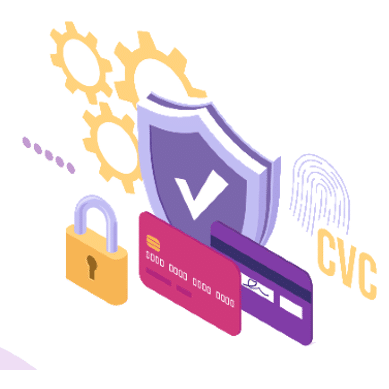What is the Segregation of Duties?
Segregation of duties (SoD) is like a game of checks and balances in the corporate world. SoD ensures that at least two people are in charge of different aspects of a job to prevent error and fraud. How is this done? SoD breaks down work that may reasonably be accomplished by a single human into several tasks so that no one person has complete control.
Segregation of duties, also known as separation of duties, is a critical component of an enterprise control system. The goal is to assign different aspects of a work or transaction to several people to avoid any one person from gaining sole or excessive control and then abusing that control for illicit or unlawful objectives. A lack of segregation of duties can create vulnerabilities within an organization’s control environment. The implementation of separation of duties internal control is essential for promoting accountability, transparency, and the overall effectiveness of internal controls.
Now that we’ve covered the importance of the Segregation of Duties, let’s dive into how it works in the real world by illustrating an example of the segregation of duties in software development.

Software Development Example of Segregation of Duties Risk
Consider a scenario where a developer tasked with writing code lacks the authority to deploy their creations directly into the live production environment. This intentional division of responsibilities is a protective barrier against the unauthorized release of code, whether it stems from malicious intent or inadvertent errors.
Here’s how the process typically unfolds:
- Code Creation: A developer skilled in programming languages and software engineering principles crafts the codebase according to project specifications and requirements. Their primary focus is writing efficient, functional, and secure code aligning with organizational standards and best practices.
- Code Review and Approval: Once the code is completed, it undergoes a thorough review by a designated reviewer or team. This individual or group possesses the expertise to assess the code for quality, correctness, adherence to coding standards, and potential security vulnerabilities. They scrutinize the codebase meticulously, identifying any flaws or areas for improvement.
- Deployment Authorization: Following a successful review, the approved code is handed off to another party responsible for managing deployment processes. This individual, often a system administrator or deployment manager, can move the code from testing or staging environments into the live production environment. Their role encompasses ensuring that the deployment process is executed seamlessly, minimizing disruptions to system availability and functionality.
By segregating the duties of code creation and deployment, organizations mitigate several risks:
- Unauthorized Changes: Separating these roles prevents developers from unilaterally introducing unreviewed or unapproved code into production environments, reducing the likelihood of unauthorized changes that could compromise system stability or security.
- Error Prevention: The dual oversight provided by code review and deployment authorization safeguards against potential coding errors, bugs, or vulnerabilities slipping through undetected. It fosters a culture of accountability and diligence, where multiple sets of eyes scrutinize code changes before they go live.
- Malicious Activities: This segregation strategy serves as a deterrent against insider threats or malicious actions by disgruntled employees. By dispersing critical responsibilities across different individuals or teams, organizations minimize the risk of one person wielding unchecked power over the software development lifecycle.
Start Getting Value With
Centraleyes for Free
See for yourself how the Centraleyes platform exceeds anything an old GRC
system does and eliminates the need for manual processes and spreadsheets
to give you immediate value and run a full risk assessment in less than 30 days
What is an SoD Matrix?
An SoD matrix is a visual representation of the IT segregation of duties within an organization. It outlines the various roles and responsibilities across different functions or departments and identifies potential conflicts if specific duties are combined within the same individual or team.
Here’s how an SoD matrix typically works:
- Identification of Duties: The first step involves identifying the key duties or responsibilities within each functional area or department of the organization. These duties may include authorization, custody, recording, verification, and other critical functions.
- Mapping of Roles: Next, the matrix maps out the roles or positions in the organization responsible for performing each duty. Depending on the organizational structure, this could include specific job titles, team names, or functional units.
- Assignment of Duties: Each duty is assigned to one or more roles within the matrix. For example, the duty of authorizing financial transactions may be assigned to the Finance Manager role, while the duty of recording transactions may be assigned to the Accounting Team.
- Identification of Conflicts: Once the duties are assigned, the matrix highlights any potential conflicts that may arise if specific responsibilities are performed by the same individual or team. Conflicts typically occur when duties related to authorization, custody, and recording overlap within a single role.
Below is a matrix illustrating the division of responsibilities across access control, system administration, network security, incident response, and data protection functions.
| Role/Position | Access Control | System Administration | Network Security | Incident Response | Data Protection |
| IT Security Analyst | Yes | Yes | Yes | Yes | Yes |
| Network Administrator | No | Yes | Yes | No | No |
| Application Developer | No | No | No | No | Yes |
| Data Analyst | No | No | No | No | Yes |
| Compliance Officer | Yes | No | No | Yes | Yes |
In this SoD matrix:
- The IT Security Analyst holds responsibilities for access control, system administration, network security, incident response, and data protection, ensuring a comprehensive oversight of cybersecurity measures.
- The Network Administrator primarily focuses on system administration and network security but does not handle access control, incident response, or data protection tasks.
- Application Developers are not involved in cybersecurity-related duties, emphasizing a separation between development and security functions.
- Data Analysts are responsible for data protection measures but are not engaged in access control, system administration, network security, or incident response activities.
- The Compliance Officer oversees access control, incident response, and data protection efforts, emphasizing aligning cybersecurity practices with regulatory requirements and industry standards.
By visualizing the distribution of duties across roles in this matrix, organizations can identify potential conflicts and implement appropriate controls to ensure compliance and minimize risks.
Start Getting Value With
Centraleyes for Free
See for yourself how the Centraleyes platform exceeds anything an old GRC
system does and eliminates the need for manual processes and spreadsheets
to give you immediate value and run a full risk assessment in less than 30 days





